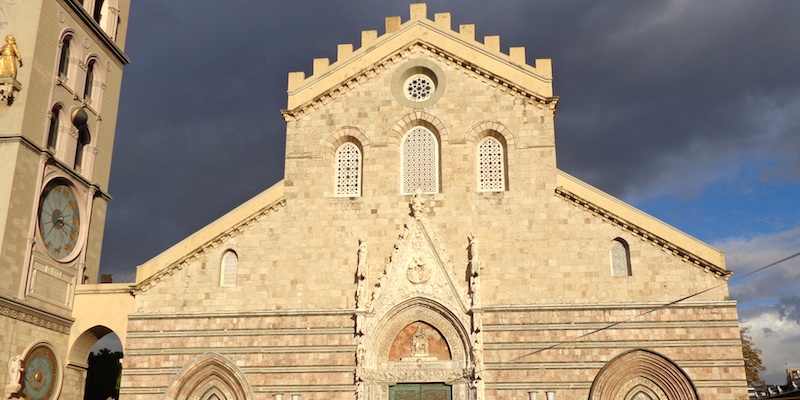History tells us that in 1198, in the place where the Cathedral is now, there once was a church dedicated to the Virgin by Queen Constance. The church was almost completely destroyed by a fire during the funeral of king Conrad IV of Germany; around 1300, they started to rebuild the church, decorating it with Byzantine mosaics. On the outside, an added frame was made. One of the double lancet windows is still an original one. During the centuries, important artists followed one another to the creation of works in the interior and outside of the building: Pietro da Boninate, G. B. Mazzolo, Leterrio Subba, Antonello Gagini, Giovanni Angelo Montorsoli, Ignazio Buceti, Andrea Calamech, Guarino, Ferrante di Bologna, etc. The building was damaged during the earthquakes of 1693 and 1783, when the bell tower also collapsed. In 1863 the restoration works started, but another earthquake in 1908 entirely destroyed the Cathedral. The reconstruction, financed by the Fascist Government, ended in 1929 when the Cathedral was opened on the 15th of August. When the Second World War broke out, Messina was damaged by the bombings, and in 1943 delayed-action incendiary bombs fell into the Cathedral nave, provoking a fire that caused more damage than the earthquake. After another reconstruction, the Cathedral was open in 1947.
The Basilica nowadays occupies an area of 53,820 square feet; it has a nave and two side aisles separated by two rows of twelve columns of reinforced concrete with capitals made of the same material, which are copies of the original ones that were made of stone. In the middle of the high altar, there is a painting of the Madonna della Lettera made by Adolfo Romano, covered by a silver manta. The big polyphonic organ rebuilt and inaugurated in 1948 is enchanting. It is made of 17,500 pipes.
A visit to the Tesoro del Duomo is particularly interesting. In the interior there are several works, including the golden manta of 1668, commissioned by the Senate and paid for using the University’s final year student’s taxes. It is used during some important ceremonies (such as the festivity of the Madonna della Lettera); a rock crystal pinecone is used as reliquary of the Virgin’s hair.
Are you a local? What do you think about Cathedral of Messina?
Login to suggest it!


